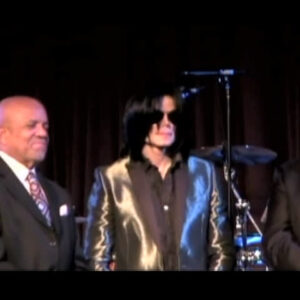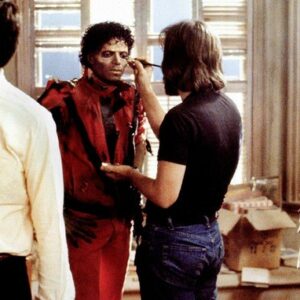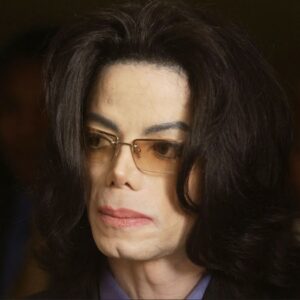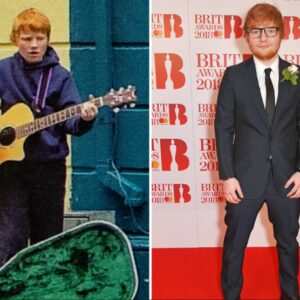Introduction
In the pantheon of hip-hop legends, Queen Latifah stands tall as one of the most influential and versatile artists of her time. Rising to prominence during an era when the genre was still defining itself, Latifah emerged not just as a rapper, but as a cultural icon who crossed boundaries and genres with ease. Today, many associate her with feminism in hip-hop, her acting prowess, and her status as a media mogul. Yet, one of the more subtle influences on her early career that often goes unexamined is the impact of 90s R&B music. In the 90s, R&B and hip-hop were frequently intertwined, and while Latifah’s primary genre was rap, the soulful melodies and themes of 90s R&B subtly but significantly shaped her sound and style.
The marriage of hip-hop and R&B in the 90s was more than just a passing trend—it was a cultural moment, and Latifah’s work is a prime example of this fusion. From her lyrical flow to her choice of production, and even her image, the influence of 90s R&B runs deep. But to understand how this connection worked, we need to dig deeper into how these two genres merged in the 90s and how Latifah’s pioneering approach made her a standout in the male-dominated hip-hop world.
The Blending of Genres in the 90s
The early 90s marked a golden age of music, especially for hip-hop and R&B. While hip-hop was gaining recognition for its raw, lyrical depth, R&B was flourishing with smooth, melodic hits that dominated radio waves. Artists like Mary J. Blige, SWV, and En Vogue ruled the charts, bringing with them not just soulful sounds but an undeniable swagger and attitude that complemented the rise of female empowerment in music. This was also the era when hip-hop and R&B began to intermingle in ways that hadn’t been seen before. The hard-hitting beats of hip-hop began to blend with the softer, melodic sensibilities of R&B, creating a new sonic landscape that appealed to a broad audience.
Latifah, whose debut album All Hail the Queen in 1989 positioned her as a fierce rapper with a distinct voice, soon found herself in the thick of this fusion. As she transitioned into the 90s, Latifah’s music began to incorporate elements of R&B, giving her songs a more diverse, polished sound. This wasn’t simply a matter of adding a catchy hook—it was about capturing the emotional depth and sonic richness that R&B brought to the table, allowing Latifah to evolve her artistry.
For many artists, this blending of genres was about pushing the boundaries of what could be done musically, and Queen Latifah was no exception. Her ability to seamlessly navigate both worlds—remaining true to her roots in hip-hop while embracing the lush sounds of R&B—set her apart. In a sense, she was at the forefront of a movement that helped both genres grow and thrive.
R&B’s Influence on Hip-Hop Lyricism and Flow
One of the hallmarks of 90s R&B was its emotive lyricism. Singers like Toni Braxton, Mariah Carey, and Aaliyah were known for their ability to convey vulnerability and strength in equal measure, using their voices to tell deeply personal stories. These themes resonated with hip-hop artists as well, who began incorporating more emotional depth into their lyrics, moving beyond the bravado that had previously defined the genre.
Queen Latifah was one of the first female rappers to embrace this shift. While her flow remained rooted in hip-hop, there was an undeniable melodic quality to her delivery that echoed the vocal stylings of R&B artists. Songs like “U.N.I.T.Y.,” which became an anthem of empowerment for women, showcased Latifah’s ability to blend the rhythmic intensity of rap with the smoothness and emotional depth of R&B. This song, in particular, stood out for its message of self-respect and empowerment, themes that were frequently explored in 90s R&B by female artists.
Moreover, Latifah’s lyrics often reflected the same vulnerability and introspection found in R&B ballads. Tracks like “Just Another Day” showcased her storytelling ability, weaving narratives about her life and experiences that resonated with listeners on an emotional level. Her flow wasn’t just about delivering hard-hitting bars; it was about connecting with her audience, much like the R&B singers who sang about heartbreak, love, and resilience.
Embracing Empowerment and Feminine Strength
One of the defining characteristics of 90s R&B was its focus on themes of empowerment, particularly for women. Artists like Whitney Houston and TLC sang about self-love, independence, and resilience in a way that was both relatable and aspirational. This emphasis on female strength found its way into hip-hop as well, with Queen Latifah leading the charge.
From the very beginning of her career, Latifah positioned herself as a feminist voice in hip-hop, challenging the male-dominated landscape with her confident, assertive lyrics. Her message of empowerment, particularly in songs like “Ladies First” and “U.N.I.T.Y.,” resonated with the themes of self-respect and resilience that were prevalent in 90s R&B. In many ways, Latifah’s music acted as a bridge between the two genres, combining the grit and defiance of hip-hop with the emotional depth and positivity of R&B.
For Latifah, empowerment wasn’t just a lyrical theme—it was a way of life. Her persona as a strong, confident woman who wasn’t afraid to speak her mind mirrored the empowerment anthems that dominated R&B at the time. Latifah’s music became a source of inspiration for many young women, much like the music of her R&B contemporaries. The fusion of hip-hop and R&B allowed her to create a unique space where she could advocate for social change, challenge gender norms, and celebrate femininity, all while delivering infectious beats and smooth melodies.
Fashion and Style Inspirations
In the 90s, R&B wasn’t just about music—it was a cultural movement that influenced fashion, style, and attitude. Artists like Mary J. Blige, En Vogue, and TLC set trends with their bold, glamorous outfits and Afrocentric flair, and Queen Latifah was no exception. From her iconic African-inspired headwear to her bold, gold jewelry, Latifah’s fashion choices reflected the visual aesthetics of 90s R&B, blending high fashion with street style in a way that was both fierce and elegant.
Latifah’s fashion sense wasn’t just about looking good—it was a statement of empowerment and pride in her African heritage. Much like the R&B divas of the time, Latifah used her style to convey confidence and individuality. Her ability to combine hip-hop’s streetwear with R&B’s glamour allowed her to craft an image that was as versatile as her music.
In many ways, Latifah’s style was a reflection of the broader cultural moment. The 90s was a time when black women in music were asserting their power, not just through their voices but through their image. Latifah’s ability to blend the aesthetics of R&B with her own hip-hop flair made her a style icon in her own right, further solidifying her status as a trailblazer in both genres.
Production and Melodic Elements
The sound of 90s R&B was characterized by smooth, soulful melodies and lush production, often incorporating live instruments and rich harmonies. While Queen Latifah was primarily a rapper, her producers frequently infused these R&B elements into her music, giving her songs a more polished and melodic feel. Tracks like “Latifah’s Had It Up 2 Here” featured intricate, soulful beats that echoed the production styles of R&B producers like Babyface and Teddy Riley.
One of the defining features of Latifah’s early music was the combination of rap verses with R&B-inspired choruses, a technique that became increasingly popular in the 90s. This fusion allowed Latifah to appeal to both hip-hop and R&B audiences, further expanding her reach. Her ability to navigate between hard-hitting rap verses and smooth, melodic hooks became a hallmark of her sound, setting her apart from her peers.
Conclusion
Queen Latifah’s legacy as a hip-hop pioneer is undeniable, but to fully understand her impact, one must also acknowledge the influence of 90s R&B on her music. From her lyrical flow to her fashion choices and production style, Latifah embraced the soulful, melodic sensibilities of R&B, allowing her to create a unique sound that resonated with a wide audience. The fusion of these two genres not only elevated her artistry but also contributed to her lasting impact as a trailblazer in music and culture.
At a time when hip-hop was still finding its voice, Latifah stood out for her ability to blend the best of both worlds, creating music that was both powerful and emotive. Her early work remains a testament to the rich, genre-blending sound of the 90s, a sound that continues to influence artists today. And while she is rightfully celebrated for her contributions to hip-hop, her subtle yet significant connection to 90s R&B deserves recognition as well.





